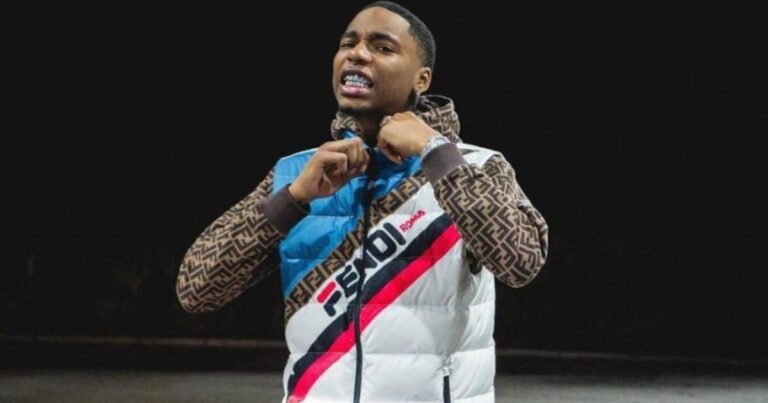Introduction to Key Glock Height
Key Glock height has emerged as a term of interest in various cultural landscapes, especially in music and fashion. Coined primarily to describe the distinct stature of the artist Key Glock, it not only reflects his physical measurements but also encompasses deeper associations with his persona and style. The term has gained traction within the hip-hop community, contributing to discussions around identity, presence, and influence in a genre where personal branding plays a significant role.
In the realm of music, particularly within hip-hop, an artist’s height can often be perceived as an extension of their commanding presence on stage and in media. Key Glock, known for his significant contributions to the genre, has a height that complements the fierce demeanor conveyed in his lyrics and performances. The interest in Glock’s height extends beyond mere curiosity, as it touches upon how artists are perceived and how those perceptions can shape their careers. Additionally, fans and critics alike often use such characteristics to create narratives surrounding the artist’s ability to resonate with their audience.
Moreover, the concept of key glock height transcends music and spills into the domains of fashion and culture. In these contexts, height often informs style choices, influencing how individuals present themselves, the clothing they wear, and how they are perceived in various social settings. Key Glock’s elevation in the public eye has sparked a broader conversation about how artists influence fashion trends, particularly among youth culture, where height can affect not just physical presence but also the essence of confidence and self-expression.
Understanding the significance of key Glock height is essential for comprehending the broader implications of stature, presence, and identity in today’s cultural landscape. As we delve further into this topic, we will explore its connections to various fields, enriching our understanding of its impact.
The Importance of Key Glock Height in the Music Industry
Key Glock, a prominent figure in the hip-hop music landscape, exemplifies how certain physical attributes, including height, can influence an artist’s presence and brand. While the primary focus in the music industry often revolves around lyrical content and production quality, the stature of an artist, such as Key Glock’s height, can have a notable impact on their overall image and reception among fans. Artists who possess a commanding presence tend to draw more attention during performances, which can enhance their ability to captivate audiences.
Moreover, height can influence the artist’s performance style and stage dynamics, shaping how they engage with the crowd. For instance, Key Glock’s performances are often marked by an assertive presence that can be partly attributed to his physical stature. This presence not only resonates with his audience but also contributes to the persona he projects within the industry. As hip-hop culture thrives on individuality, artists like Key Glock leverage their unique characteristics, including height, to set themselves apart from the multitude of emerging talents.
Additionally, the way fans and aspiring artists perceive height can vary significantly within the hip-hop community. While some may idolize taller artists for their perceived dominance or authority in the genre, others may break this mold by finding inspiration in artists of varied heights. As such, Key Glock’s contributions and growing influence in the music scene highlight how aspects such as height play a role in shaping trends and styles in hip-hop. This relevance extends beyond mere statistics; it reflects an artist’s journey and the evolution of their brand, making key performances even more significant as they showcase the interplay of height, presence, and artistry.

Cultural Impact and Perceptions of Glock Height
Height is a physical characteristic that often influences societal perceptions and cultural narratives. In the realm of public figures, such as artists and entertainers, height can play a significant role in how they are viewed by their audience. The term “key glock height,” referring to the height of the musician Key Glock, becomes a lens through which we can explore broader cultural implications. Height stereotypes can often dictate expectations; taller individuals are frequently associated with confidence and leadership qualities, while shorter individuals may face different societal challenges.
The impact of key glock height extends beyond mere numbers; it weaves itself into discussions about fashion choices and public appearances. For instance, key Glock’s stature may inform his style, influencing both the types of clothing he wears and the overall image he projects to his fans. The fashion industry often leans towards certain height standards, with taller models typically seen as more desirable. This trend can inadvertently affect how artists are marketed and perceived. As such, Glock’s height may play a role in either conforming to or challenging these industry norms.
Moreover, height can affect the reception of an artist’s work. In music and entertainment, public figures like Key Glock are scrutinized not just for their artistic output but also for their physical presence. Key Glock height can influence how fans relate to him; it may foster a sense of relatability among certain demographics or, conversely, create a distance for those who hold different physical standards. In a culture increasingly focused on body image and authenticity, key Glock’s influence may challenge conventional views or reinforce societal standards. Understanding the cultural context of height allows for deeper insights into personal identity and societal expectations.
Conclusion: The Future of Key Glock Height in Popular Culture
As we’ve explored throughout this blog post, the concept of key Glock height extends beyond mere physical measurements. It encapsulates a fusion of musical identity, personal expression, and cultural significance. As hip-hop continues to evolve, so too does the dialogue surrounding artists like Key Glock, whose stature in the industry raises important questions about the relationship between physicality and artistic presence.
Looking ahead, there are several potential trends that may shape discussions about key Glock height and its implications in popular culture. With the emergence of new artists and changing industry standards, the focus on how height plays a role in an artist’s image may grow. Some speculate that as more artists break conventional molds, the significance of physical attributes like height could diminish, highlighting talent and creativity over biological factors.
Furthermore, social media platforms serve as amplifiers for discussions and trends surrounding artists. They allow fans and commentators to engage in conversations about artists’ height, style, and influence in real time. This democratization of opinion may contribute to a more nuanced understanding of the key Glock height, blending it into broader narratives that appreciate artistic contributions irrespective of physical measurement.
In essence, the conversations around key Glock height reflect shifts in cultural dynamics. As we continue to witness the merging of different musical influences and an increasing appreciation for diversity within the music industry, the interpretation of height—both literally and metaphorically—may evolve. Ultimately, while height may remain a point of interest, the future will likely reward a deeper exploration of the artistry and individuality that defines musicians in the contemporary landscape.
